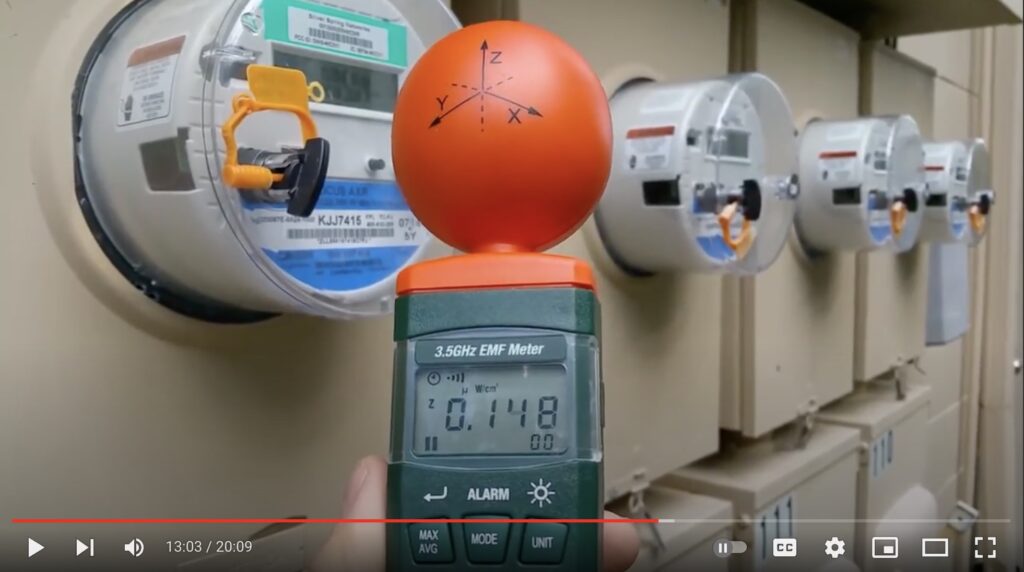Suffering from unexplained headaches? Feeling weaker than usual? Having difficulty concentrating? These, and many worse ailments, may all be symptoms of poor indoor air quality. Don’t worry – there’s an easy fix in most cases that can get you back to your normal. healthy self.
Have you ever stopped to think about the air you’re breathing inside your home? We often worry about outdoor pollution, but the truth is, the air within our own four walls can be even more contaminated. And considering how much time we spend indoors, understanding and improving your indoor air quality (IAQ) isn’t just a good idea—it’s crucial for your health and well-being!
Poor IAQ isn’t just about feeling a little stuffy. It can lead to all sorts of issues, from minor annoyances like headaches and fatigue to serious respiratory problems and even long-term illnesses. By getting savvy about common indoor pollutants, you can take control and create a healthier haven. Let’s break down the usual suspects.
Carbon Dioxide (CO2): More Than Just Climate Change
We all exhale CO2, and in many indoor spaces, those levels can climb surprisingly fast. While CO2 isn’t acutely toxic at typical indoor concentrations, elevated levels are a big red flag for poor ventilation. And poor ventilation means other nasty pollutants can build up too! You might experience:
- Drowsiness and Fatigue: Feeling sluggish even after a full night’s sleep? High CO2 could be the culprit.
- Headaches: Ever get that dull ache in a stuffy room? It might be CO2.
- Difficulty Concentrating: Studies, including one from Harvard Medical School, have shown that even moderately elevated CO2 levels (around 1,000 ppm) can impact cognitive function and decision-making. Imagine the impact on your work or your kids’ studies! Researchers have even observed “astonishingly large” declines at levels closer to 2,500 ppm. These effects aren’t just theoretical; they’ve been seen in real-world settings like classrooms, offices, homes, and even cars.
The research is clear: higher CO2 levels are linked to slower response times and lower correct answers on cognitive tests. This is why some experts are pushing for stricter occupational exposure limits of under 1,000 ppm in workplaces that demand high cognitive function.
Now, while CO2 isn’t as immediately deadly as carbon monoxide, extremely high levels can still be dangerous. Think industrial accidents where CO2 displaces oxygen, leading to asphyxiation. Even without oxygen deprivation, too much CO2 messes with your body’s acid-base balance, causing symptoms like increased breathing and heart rate, dizziness, and impaired cognitive function.
In our homes, we rarely see those acutely fatal levels. However, prolonged exposure to even moderately elevated CO2 (above 1000 ppm) from poor ventilation can definitely lead to reduced cognitive performance, fatigue, and general discomfort, slowly chipping away at your quality of life.
So, what are the numbers to watch for?
- Good: Below 800 ppm (parts per million)
- Acceptable: 800 – 1000 ppm
- Poor: Above 1000 ppm
And here’s a quick look at what’s considered “dangerous”:
- 1000 – 2000 ppm: Drowsiness, poor air quality, reduced thinking power. Not immediately harmful, but a clear sign you need more fresh air!
- 2000 – 5000 ppm: Headaches, fatigue, stuffiness, poor concentration, increased heart rate, slight nausea. Long-term exposure at these levels is definitely not good for your health.
- Above 5,000 ppm (0.5%): OSHA (Occupational Safety and Health Administration) sets its workplace limit here for an 8-hour workday. Symptoms become more pronounced.
- 10,000 – 20,000 ppm (1% – 2%): Moderate respiratory stimulation, increased heart rate and blood pressure. You might feel dizzy or confused.
- 30,000 ppm (3%): A “Ceiling Exposure Limit” by organizations like ACGIH for short periods. Immediate ventilation is crucial!
- 40,000 ppm (4%) and above: Immediately Dangerous to Life or Health (IDLH). This is serious: severe headaches, shortness of breath, dizziness, confusion, even loss of consciousness or death.
- 50,000 ppm (5%) and above: Oxygen deprivation becomes rapid and toxic.
- 80,000 ppm (8%) and above: Your sight dims, you sweat, tremble, lose consciousness, and face convulsions, coma, and potentially death from lack of oxygen.
The CO2 Fix: The simplest and most effective way to manage CO2 is through good old-fashioned ventilation! Open those windows and doors, use your kitchen and bathroom exhaust fans, and if natural ventilation isn’t cutting it, consider a mechanical system.
What about plants? Don’t they help?
We love our leafy friends, and yes, plants do absorb CO2 and release oxygen through photosynthesis. Much of the buzz around plants and air purification comes from studies like NASA’s 1989 Clean Air Study. However, those studies were done in sealed, small chambers. Your home isn’t an airtight box! Real homes have constant air exchange with the outdoors, which is far more effective at diluting CO2 and other pollutants than a few houseplants.
To truly make a dent in CO2 levels with plants, you’d need a literal jungle – think 10 plants per square meter, far more than most of us would have. Plus, while plants photosynthesize during the day, they also “breathe” at night, releasing CO2. So, the net effect from a typical plant collection on CO2 is pretty minimal in a real-world scenario.
Carbon Monoxide (CO): The Silent Killer
This one is truly terrifying because it’s colorless and odorless. Carbon monoxide is produced when fuels like natural gas, propane, wood, or heating oil don’t burn completely. Your indoor fireplace, whether gas or wood, produces CO. The danger comes when this gas isn’t properly vented outside and builds up in your home. Wood fires, being less efficient, tend to produce more CO than gas fires, but even gas fireplaces can be problematic if not properly adjusted or vented.
CO is deadly because it prevents your blood from carrying oxygen to your vital organs, leading to severe injury or death.
Symptoms of CO poisoning can include:
- Headache
- Dizziness
- Nausea and vomiting
- Weakness
- Confusion
- Convulsions
- Loss of consciousness
- Death
The Recommended Level: ZERO. Seriously. Carbon monoxide should not be present in your indoor air. At all.
The Fix: This is non-negotiable. Install carbon monoxide detectors on every level of your home, especially near sleeping areas. Test them regularly, replace batteries, and make sure all fuel-burning appliances are professionally installed and maintained. NEVER use generators, grills, or other fuel-burning devices indoors. That means no charcoal grills in the garage, folks!
Volatile Organic Compounds (VOCs): Nice Smelling Poison
Ever opened a new package, painted a room, or used certain cleaning supplies and noticed a distinct “smell”? Those are likely VOCs—gases emitted from a huge range of household products, including:
- Paints and varnishes
- Cleaning supplies
- Furniture and carpets
- Air fresheners and perfumes (yes, even your favorite!)
- Printers and copiers
If you can smell something unnatural, even if you don’t mind the scent (like laser toner or hairspray), it’s probably a VOC and not great for you.
Exposure to VOCs can cause:
- Eye, nose, and throat irritation
- Headaches
- Nausea
- Dizziness
- With prolonged exposure to high levels, damage to the liver, kidneys, and central nervous system.
Recommended VOC Levels: There’s no single “safe” number here because there are so many different VOCs with varying toxicities. The goal is simply to minimize your exposure as much as possible.
The Fix:
- Choose wisely: Opt for low-VOC or zero-VOC products whenever you can.
- Ventilate: Ensure good ventilation when using products that emit VOCs. Open windows while cleaning or painting.
- Store smart: Keep chemicals in tightly sealed containers and in well-ventilated areas, ideally outside your living space (like a detached shed).
- Consider air purifiers: Air purifiers with activated carbon filters can help remove VOCs.
Radon: The Invisible Threat from the Ground
Radon is a naturally occurring radioactive gas that silently seeps into our homes from the soil and rocks below. Because it’s odorless and colorless, you can’t detect it without testing. And here’s the scary part: long-term exposure to high levels of radon is the second leading cause of lung cancer in the United States.
Radon is formed from the radioactive decay of radium, an element constantly undergoing nuclear “decay.” In the U.S., we measure radon in picocuries per liter (pCi/L). Levels can vary significantly from one area to another based on the underlying geology, ventilation, and how long you spend in a building.
Why is it important to control healthy indoor radon levels? Measuring radon exposure at home or building is key to protecting the health of anyone breathing the air, but interpreting those levels is not quite as exact without radon tests and monitoring. As they say, everything is relative, and what is an acceptable radon gas level to one country or organization may differ from what is acceptable to another. This is influenced by numerous factors including the type of rocks and soil beneath a building, ventilation, and duration of time spent in the building.
One thing remains certain: radon exposure can cause lung cancer. According to EPA estimates approximately 21,000 people die from radon-related lung cancer every year in the United States.
That alone should be the reason to find out if you, or your family, are being exposed to excessive levels of the dangerous gas. Radon gas levels in the home need to be monitored daily as the levels fluctuate over time to reduce health risks. Radon can build up in the air in any home or building whether it has a basement, is sealed or drafty, or is new or old. There is no known safe level of radon and you should always aim to have the lowest level.
The EPA recommends taking action if your radon level is 4 pCi/L (picocuries per liter) or higher. One curie (Ci) is equal to the radioactivity of one gram of radium, which decays at about 2.2 trillion disintegrations per minute. A picocurie (pCi) is one trillionth of a curie (Ci). Doesn’t sound like a lot, but considering a radon level of 4 pCi/L is the equivalent of smoking 8 cigarettes per day or receiving 200 chest X-rays per year, you can see this isn’t good.
As your radon levels increase, so does your risk.
The only way to know if you have a radon problem is to test your home. You can purchase a do-it-yourself radon test kit or hire a qualified radon professional. If your test results are high, mitigation systems can be installed to reduce radon levels.
A mitigation system reverses this process by creating a lower pressure zone beneath your house than the pressure inside. This draws the radon from the soil away from your home and safely vents it outside. A fan then continuously exhausts these gases harmlessly into the outside air, where they quickly disperse and become diluted to safe levels.
By creating a controlled pathway for radon to exit your home, these systems effectively protect your family from the dangers of this invisible, odorless gas.
Taking Control of Your Indoor Air Quality
Improving your indoor air quality is an investment in your health and well-being. By being aware of these common pollutants and taking proactive steps to monitor and mitigate them, you can create a healthier and more comfortable living environment for yourself and your family. So, take a deep breath and consider the quality of the air you’re inhaling every day – it makes a bigger difference than you might think.






